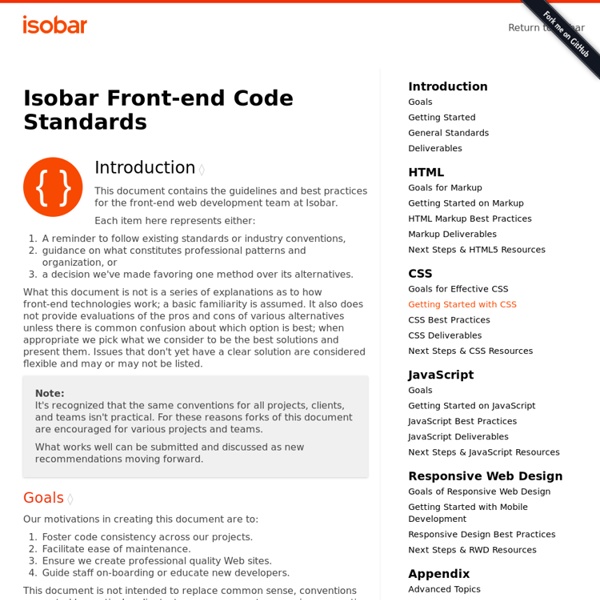Front-end Code Standards & Best Practices

doug/depthjs
randombrad/code-standards
Developer Documentation
March 30, 2020 Update: We understand these are challenging times for our developer community, so we are postponing disabling the Instagram Legacy API Platform by 90 days to June 29, 2020. Remaining endpoints on the Legacy API will no longer be available after this date and your app's users may lose functionality. We urge you to migrate to the Instagram Graph API and the Instagram Basic Display API without delay so that users of your app have time to transition as well. FAQs Q: Why should I migrate to the Instagram Graph API platform?
Bradley Wood's Liferay Tips
Bradley Wood's Liferay Tips Home My Liferay.com Blog My github Liferay Github Liferay 6.1 Javadocs Raymond Auge's Blog Buy me a Coffee Disclaimer Wall of Wonder Archive Subscribe (RSS) Ask me front-end Liferay Questions Random post Twitter Catching Elephant is a theme by Andy Taylor Liferay Cloud Services Beta by James Falkner Today we are announcing an open Beta of Liferay Cloud Services! Liferay Benelux Solutions Forum - Amsterdam by James Falkner As part of my community party planner role at Liferay (aka community manager), I try to get out and meet many of you at industry and Liferay conferences and other events. Background Task - a.k.a the secret weapon behind the new asynchronous staging by Dániel Kocsis The more refined staging along with Liferay Portal 6.2 has been out for a while and you might have read Mate Thurzo’s great blog entries about the topic, yet I think it is also worth the time to talk via Liferay Staff Blogs Free Retakes on Liferay Certification Exams This Month by Jeffrey Handa Older
Swiffy
As part of our transition of display ads to HTML5. the Swiffy Flash conversion tool is no longer available. We will continue to serve the Swiffy runtimes, so any files you have already converted will continue to play. Today more consumers are using the web in HTML5 compatible environments than Flash-compatible environments. In order to reach as large an audience as possible, we encourage everyone to transition to HTML5 authoring. Developers who currently create Flash SWF files have several ways to switch to HTML5 including Adobe Animate and Google Web Designer.
Getting Started with Your Facebook App on Heroku
facebook Table of Contents A Facebook app typically uses an SDK to interact with the Facebook API, using Facebook’s Graph API and FQL to retrieve and post information to Facebook. A Facebook application can easily be developed and deployed to Heroku (in any of Heroku’s supported languages) which has code that interacts with Facebook’s APIs in this manner. This guide is for Facebook developers who develop and deploy their applications on Heroku. It assumes no previous knowledge of Heroku, and will walk through every part of the process: creating an app and a Heroku account, setting up local development tools, and deploying changes to your Facebook app. Prerequisites Basic Facebook app creation knowledgeBasic Git knowledgeA Heroku user account. Local workstation setup Install the Heroku Toolbelt on your local workstation. Once installed, you use the heroku command from your command shell. heroku login Enter your Heroku credentials. Workflow Creating the Facebook app Creating the Heroku app
Code Space: Combining Touch, Devices, and Skeletal Tracking to Support Developer Meetings
Code Space: Combining Touch, Devices, and Skeletal Tracking to Support Developer Meetings Andrew Bragdon, Robert DeLine, Ken Hinckley, and Meredith Ringel Morris November 2011 We present Code Space, a system that contributes touch + air gesture hybrid interactions to support co-located, small group developer meetings by democratizing access, control, and sharing of information across multiple personal devices and public displays. In Proceedings of ITS 2011 Publisher ACM
Related:
Related:



